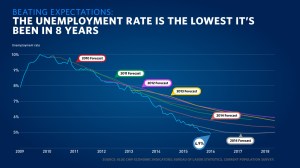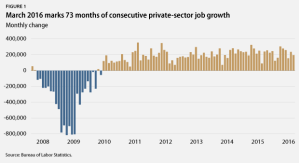The unemployment rate in Massachusetts dropped to 2.9 percent in November, falling from 3.3 percent in October and marking the first time it has been below 3 percent since January 2001. Employers added 5,800 jobs in November — 3,800 of which were in government, while more than 1,000 jobs were added in each of the following three industries: construction, financial activities, and professional, scientific and business services.
Nationally, the unemployment rate is 4.6 percent.
The tight labor market has created a talent shortage locally and is prompting Massachusetts employers to move quickly through the hiring process. PSG advises employers to stay in touch with what is going on in the market and develop a clear picture of their talent needs. Organizations that begin the recruitment process when they are unsure of the role or unprepared to move quickly risk wasting time and even hurting their employer brand. For more advice on how to operate efficiently in the current job market, reach out to a PSG rep today for a consultation!




